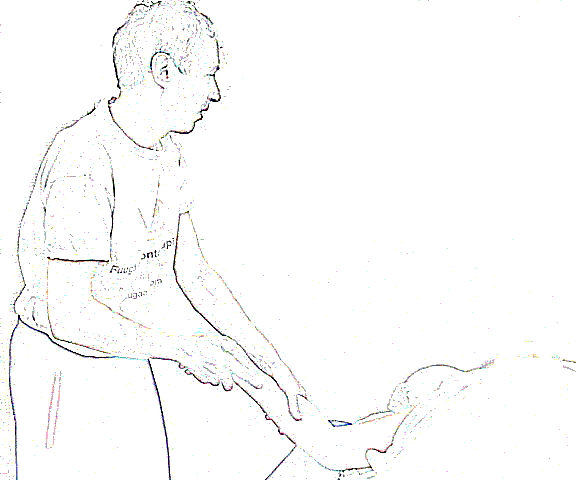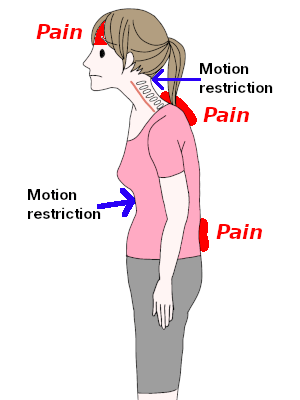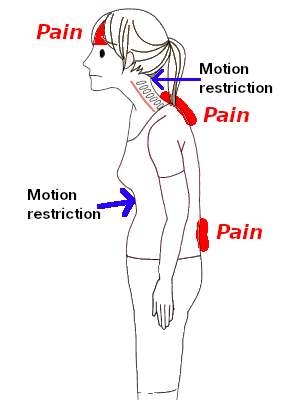![Where is the median nerve stuck? [Where is the median nerve stuck?]](forearm-nerve.jpg)

Leading thought
The message from your body
I am not a “regular” masseur who mainly massages the places where symptoms such as pain, muscle tension or stiffness occur. I do things differently. For me, a symptom is a message from your body. It means that something is disturbing the functioning of your body. Your body has to adapt to that disturbance. This causes overload elsewhere in the body. I try to locate and treat the cause. If the symptom then diminishes or disappears, I know that I have found the cause or one of the causes. But if I treat the symptom, I silence the messenger. How can I then find out the content of the message? So first I try to understand the message from your body and to react to it. Only then do I treat the symptom, if it is still necessary.
Motion restrictions and pain


Every movement you make causes a series of other movements. Dozens of muscles are activated via the fascial meridians. Nerves and blood vessels must be able to follow the movement. Your internal organs must be able to move with your chest and spine. When something in the body cannot move sufficiently, the whole body has to adapt. The motion must find a way around the less mobile area. As a result, some parts of the body have to move more than normal. This puts too much strain on them and causes pain. The area with limited mobility itself is rarely painful.
The picture shows an example. A motion restriction in the abdomen puts strain on the back and pulls the head forward. The latter causes a motion restriction in the base of the skull, which irritates the sensory nerves of the forehead.
Adhesions and their treatment
In many cases, reduced mobility is caused by adhesions between adjacent tissues. With the right techniques, such adhesions can be released painlessly and without much force. Basically, it comes down to listening sensitively to what the body itself wants, rather than forcing it. Over the years, I have learned many manual methods to mobilize different structures in the body: from bones, muscles, fasciae (membranes) and scars to nerves and internal organs. The techniques I use come mainly from various forms of massage and osteopathy.
![Hard-handed and gentle treatment of adhesions [Hard-handed and gentle treatment of adhesions]](adhesions-treatment.jpg)
The protective response
Sometimes the symptoms occur in an area that contains a motion restriction. This may be the result of tissue damage or bone injury. In that case, substances are released that cause local swelling and increased muscle tension. The body does this to protect the area from further damage and to enable healing. Sometimes there is no actual damage, but the brain interprets certain signals from the nervous system as injury. The brain then triggers a protective response in the area of the perceived damage.
Even when symptoms occur in an area with limited mobility, I wait to treat the symptoms until I have formed a clear picture of what is going on. This is because if there is indeed something requiring protection in the area where pain or stiffness occurs, massaging away the muscle tension will lead to a worsening of the symptoms after the massage treatment. So I first investigate whether something outside the symptomatic area is disturbing the nerve signals to the brain. Only when I can no longer achieve improvement by treating other areas do I proceed to treat the symptomatic area. In doing so, I carefully observe the body's reactions in order to prevent inflicting any further damage.

